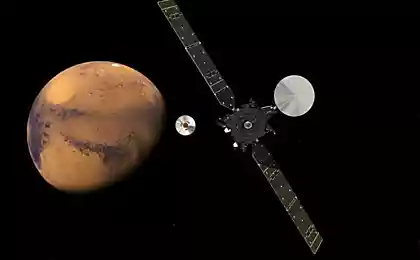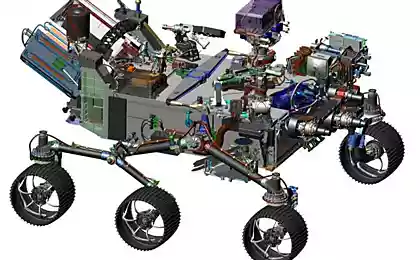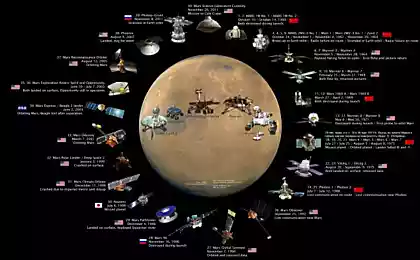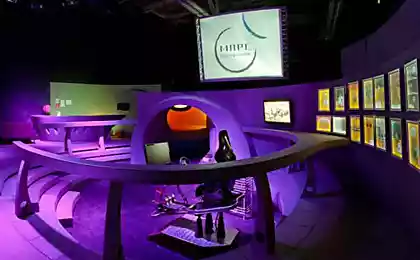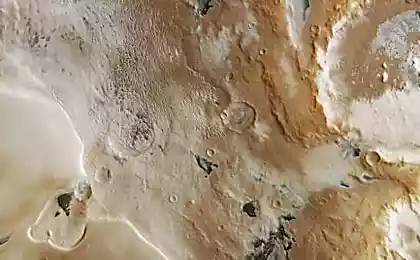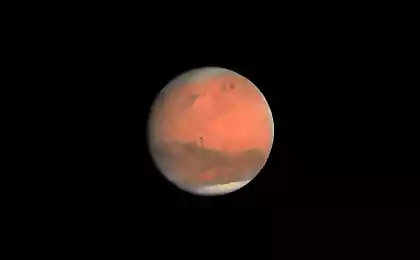1197
Why bomb Mars?
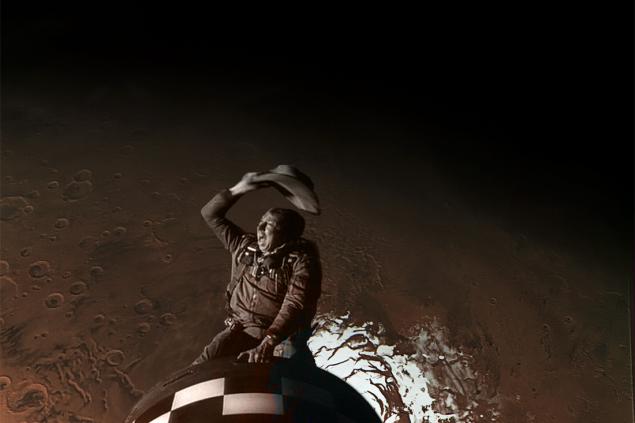
Last Friday, the American industrialist Elon Musk, the air of evening comedy club shared the idea that the nuclear bombing of the Martian poles could turn dry and cold Red Planet more comfortable for people. The idea rushed to discuss almost all international and Russian media, but almost no one tried to look at the situation in the context of current scientific knowledge about Mars. And today we look at the latest scientific data and determine or not to bomb.
Actually, the idea of bombing the Martian poles for terraforming - the creation of Earth-like planets - a little less than the time the invention of thermonuclear bombs. The alternative - to lose an asteroid or comet on a pole. This idea is described in the relevant article in Wikipedia, so it is unclear why the media grabbed for it only after the words mask. He probably learned it from books futurist Michio Kaku's "Physics of the Future." Although, I must admit that this concept is already ten years out of date.
Scientists have known since the XIX century of the existence of Martian ice polar caps. Then they have observed seasonal variation and represented as thawing polar ice filled irrigation canals Martians. Ie believed that the ice water. Then, in the middle of the XX century, even with the help of telescopes have identified about atmospheric composition and the average temperature of Mars. It was found that the atmosphere of carbon dioxide, very sparse and cold. After that had come to terms with the fact that at the poles is frozen carbon dioxide, known as the & quot; dry ice & quot ;. Such name it received for that earth pressure from the solid state directly to a gaseous i.e. switches sublimated. When Martian pressure has similar properties and water ice, but it requires a higher temperature for sublimation. Carbon dioxide evaporates at -77 degrees Celsius, and water at 1 C. Only in the deepest hollows of Mars, where the atmospheric pressure is a little higher, the water can maintain the liquid in the range of a few degrees above zero.
The first spacecraft to specify the composition of the Martian atmosphere, surface temperature, and composition of the polar ice, and only confirmed what - polar cap seemed to carbon dioxide. At the same time, humanity succeeded in developing nuclear weapons. It was then that the idea to bomb the Martian poles.
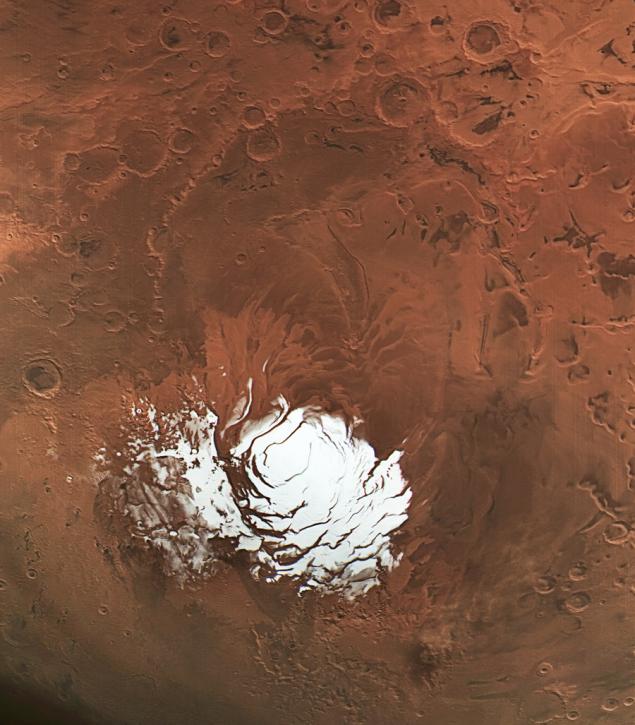
The idea of terraforming loomed simple and logical: nuclear bombs / throw off asteroids / giant reflectors melt the polar ice is carbon dioxide = & gt; atmosphere increases density = & gt; carbon dioxide - a greenhouse then becomes warmer, and the pressure above = & gt; ground thaws again, thanks to the increased pressure, the rivers flow, there are rains. After that period of relatively rapid heating of the planet, we have to send to Mars unicellular algae and wait for a few thousand years old, as long as they do not create us a liveable atmosphere. PROFIT
But in 2003, flew to Mars, the European spacecraft Mars Express, and spoiled the whole picture. In 2005, he turned his MARSIS radar and "enlighten" the northern and southern polar caps. It turned out that permanent ice deposits that do not change during the change of seasons - it is frozen water.
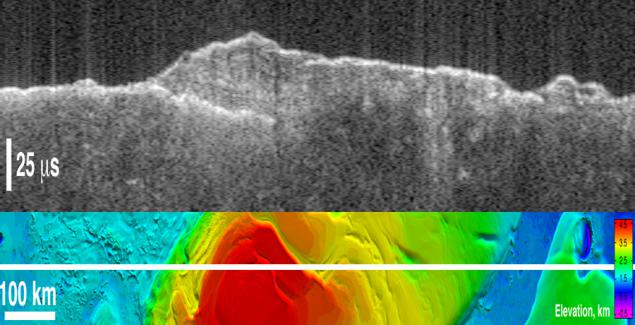
A dry ice at the poles - is tonyusenkaya crust freezes in winter. It was guessed before, but did not know the ratio of carbon dioxide and water ice. Bomb water is useless - it requires too great a temperature to thaw, and has too high for Mars freezing point. Even if we evaporate the polar ice, the water condenses in the upper layers of the atmosphere, freezes and snow falls. In addition, water clouds and snow effectively reflect sunlight, thus vaporizing the polar water can get snow, which further freezout Martian atmosphere, because the sun's rays will be reflected rather than absorbed by the soil.
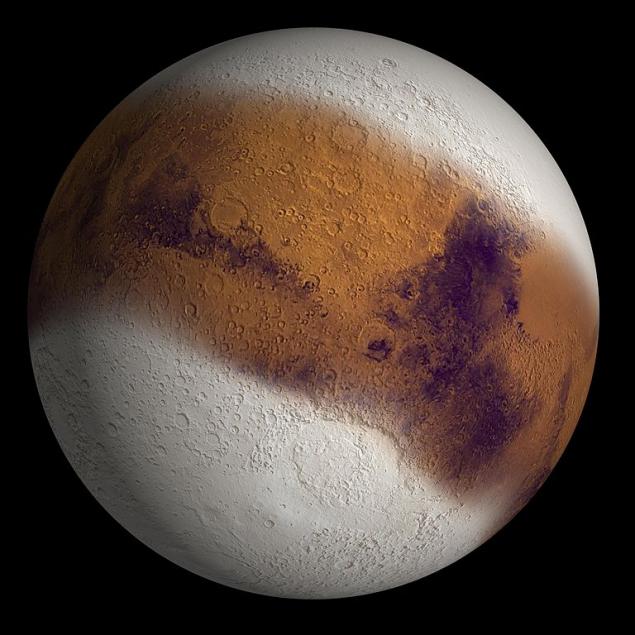
Water on Mars have not enough. Power water deposits in the north more than one and a half kilometers, and in the south up to three and a half. Seasonal same ice freezes in the winter - it really is carbon dioxide, but the thickness of this layer in the winter at the North Pole does not exceed three meters, and on the south - eight meters. In the summer, all the seasonal carbon dioxide evaporates at one end and is deposited on the other. Because of the length of the orbit of Mars winter in the southern hemisphere are shorter, but cooler so there is more ice and water and carbon dioxide.

When carbon dioxide is frozen at the south pole, the atmospheric pressure on the planet falls on a third of the maximum value. The average pressure on Mars is 7, 1 mbar. The pressure on the Earth about 1 Bar , the prefix "mi" means 1/1000, ie Mars has approximately 1/150 of the earth pressure. Even if we are able to heat both the Martian poles at the same time, it is unlikely the pressure on Mars is suitable for 10 mbar or 1% of the earth.
If we need a planet with an atmosphere suitable even for life, and for more or less secure existence, the pressure on Mars is to raise at least ten times, then it will reach the so-called " limit Armstrong " - the pressure of 60 mbar, below which water boils at a temperature of the human body. And best to increase the pressure on Mars is 50 times - so approach the conditions that are on Everest - will not be able to breathe, but at least will be changed to suit a warm jacket.
Back in the real world. In 2005, American flew to Mars spacecraft MRO. He also had radar, although not as long range as that of Mars Express. He could not see the bottom of the southern polar cap, but was able to see something interesting for fans of the bombing.
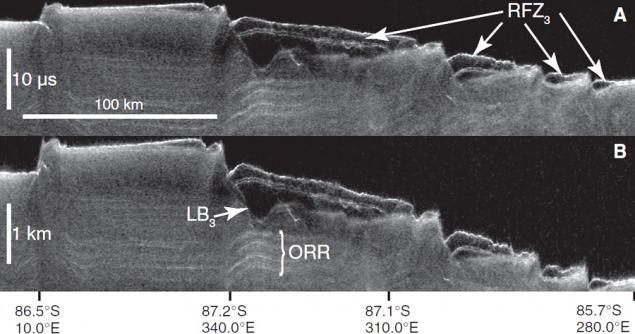
At the top of the polar cap нашлись Buried deposits of carbon dioxide ice. In the summer they do not evaporate because of their partially covers the water ice and they are in the center, the coldest part of the polar shapki.Hotya little evaporation inventories of carbon dioxide is still going, so on the surface, they have a characteristic "cheese" terrain.
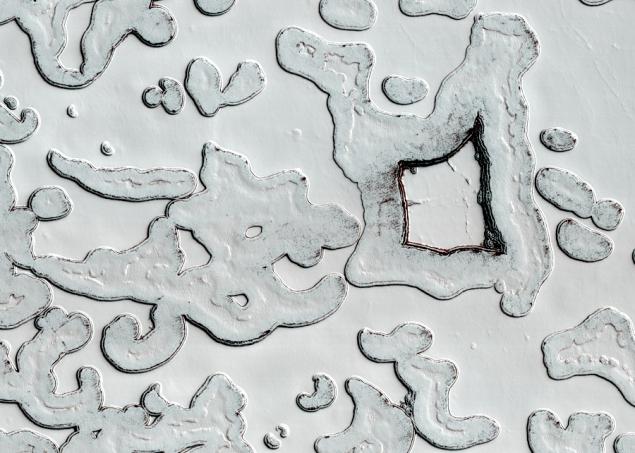
Assessing the radar data with the depth and satellite data with the spread of "cheese" terrain, scientists have concluded that the south pole of Mars lies from 9, 5 to 12 thousand cubic kilometers of ice. It sounds solid, but if these deposits evaporated, the density of the atmosphere will increase by 4-5 mbar or 80%. That is, even doubled, and we have ten or fifty times greater than the 5 mbar and 60 or 350! Even if we melt all the ice carbon dioxide of Mars to the human body is still the actual conditions do not change and will be close to absolute vacuum.
Then, is there any sense to melt the stored carbon dioxide ice? In principle, there is a little facilitate the landing of spacecraft that can effectively inhibit the atmosphere. It will take a few kilograms of payload more. At the bottom of the deepest valleys, where the atmospheric pressure is higher than elsewhere, a little easier for people to work in spacesuits, and the construction of durable buildings. Ie in terms of further development and settlement of the planet, any additional drop of gas (preferably a cubic kilometer of & quot; zhostky gas & quot;) It will be useful. But still it is a gateway, suits, frost and eternal danger of decompression.
By the way if such bombing was set out in a book «Martian» , described the story would have been a little closer to reality. Then it would be possible to justify the powerful storm, with which the story begins, and the relative ease of movement in the suit . i>
Now think about another question: whether, in principle, humanity melt even these unfortunate 12, 5 thousand cubic kilometers of dry ice? What would happen if we threw the most powerful bomb ever created in human history?
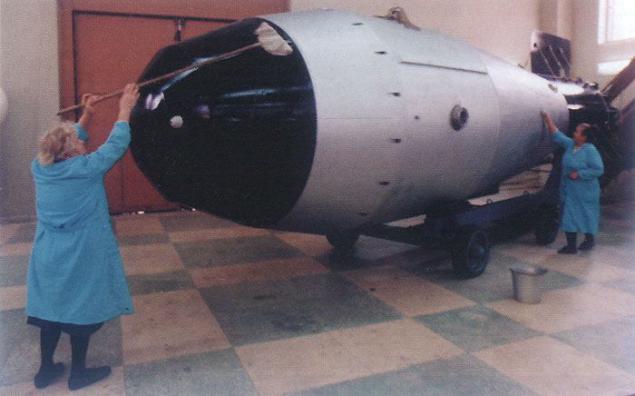
This question was asked subscribers community & quot; Deep Space & quot ;. Answer was slightly different, but the difference was due to the opening: some believed the costs of the evaporation of the dry ice in the earth pressure, and someone in a Martian. Answer rechecked & quot; Severe techie & quot ;. And that's what happened, if we'll drive & quot; кузькину mother & quot; in the very thick ice, not allowing the energy of the explosion scattered to the side, and there undermine ...
That explosion would allow to evaporate 353 million tons of dry ice. Either 0, 23 cubic kilometers. Let me remind you, in the deposits contain up to 12, 5 th cubic kilometers of ice. Ie to evaporate all of the known deposits of dry ice on Mars (and increase the current density of the atmosphere at 1, 8 times instead of the desired 10 or 50 times) we need 55 thousand (!) "king-bombs." So much thermonuclear weapons in the world there physically and if I were, I would be seriously worried about the future of humanity.
Moreover, a "gruel" weighed 26, 5 tons. Now there is no such missiles that could deliver as much to Mars at a time. Perhaps future American SLS could. But to build 55 thousand superheavy missiles will not master any economy in the world. Even the world will not master.
Therefore, all the arguments about how our scientists slightly change the Earth's axis, bombed the Martian poles, no more than a mental balancing act has nothing to do with objective reality. Not in this century.
However, responding to the question or not to bomb, I would have answered in the affirmative. Yes, a couple of nuclear and thermonuclear bombs better than I would have dropped to Mars. One, is more powerful, I threw to the South Pole - for the sake of the experiment. See how much gas will escape in reality, what processes occur in the atmosphere, how long they will be observed. Carry out the first phase of application of terraforming - natural experiment.
Another pair, and preferably four charge reset at the equator, equidistant from each other. Of course, first lard Martian surface seismic sensors, and climate stations. This will allow seismic sounding bowels of the planet, so we learn about its deep structure is much more than we know today. In principle, you can do without the bombs, just place the sensors and wait for the fall of an asteroid bigger, but the wait can be tightened, and all of the explosions will be scheduled, and in the right place.
By implementing such an experiment mankind has already technically ready. Russia, one can implement it yourself. Russian Space Agency have even been a joint project with the Finnish Meteorological Institute - & quot; metnet & quot; (Mars-Net). Not the bombing, and the network of climatic and seismic stations on Mars. And he did not officially closed, although it is rumored that the money has run out.

Make of 2-3 metnet, send to Mars, and will only agree to the UN briefly remove the moratorium on nuclear testing in space. This project will comparatively low even in comparison with the cost of the rover Curiosity, not to mention the human cost of the flight. All the technologies are ready or can be prepared in less than 10 years - bomb is simple enough, it's enough one cassette warhead RS-20V" Voivod » - Research and exhaust will be no less than a dozen of expensive missions.
Guardian of the Martian environment to remind you that the world was carried out in 2474 of nuclear and thermonuclear explosion, and did live once, and the Martians will survive, if at all there.
The next issue of "Applied terraform" we'll talk about what happens to the planet's atmosphere, and how important the magnetic field. If you have something to say about it, wait for the next release, please be as long as proof. I>
Source: geektimes.ru/post/262474/
Fridge, kettle and vacuum cleaner - who "eats" more?
Underground neutrino detector will examine and black holes




